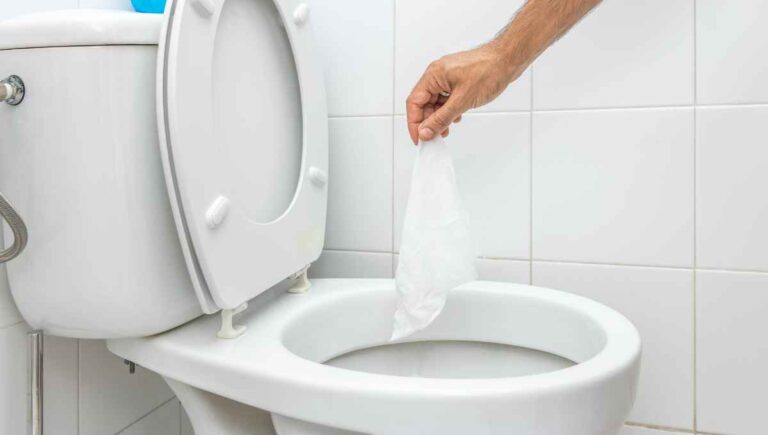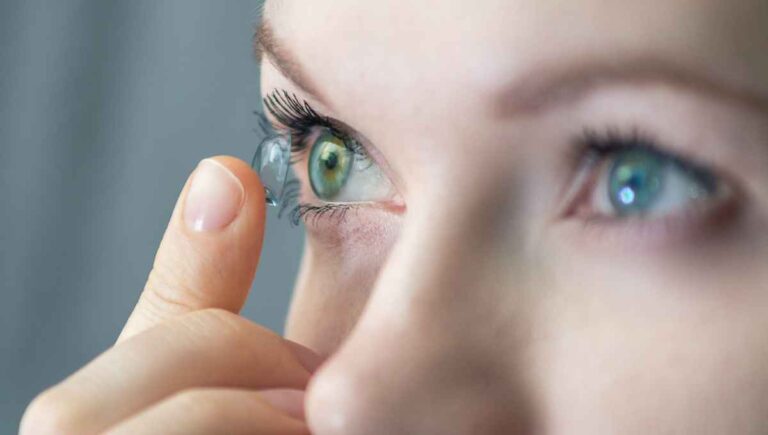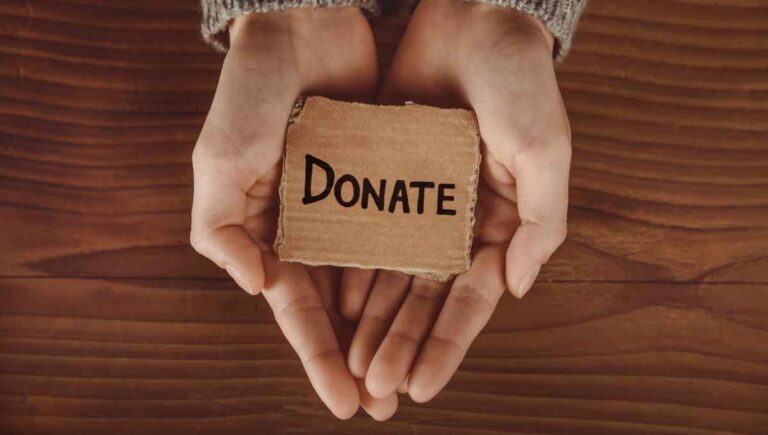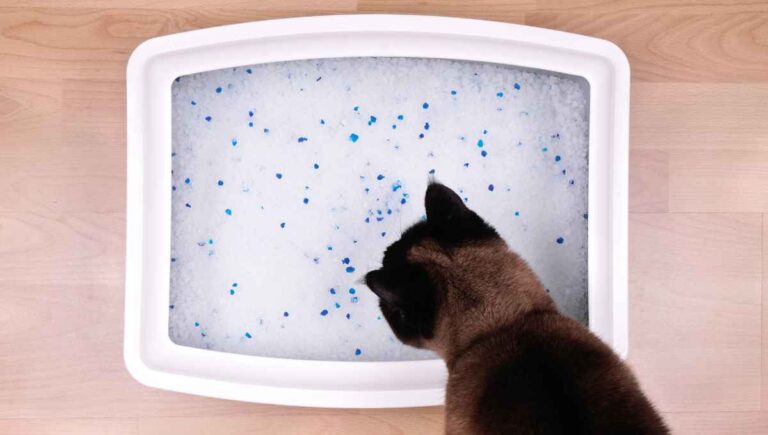Why Did My Toilet Seat Turn Blue? (We Cover Every Reason)

Have you ever walked into your bathroom and noticed that your toilet seat is a strange blue color? If so, you’re not alone – this is a common problem many people experience. But what causes it, and is there any way to fix it?
Toilet seats sometimes turn blue due to changes in PH levels and bacteria in the body. This is usually caused by an increase in estrogen and progesterone levels, which makes your urine and sweat more acidic. If the sweat or urine comes in contact with your toilet seat, it may turn blue.
However, it’s important to note that this is not the only reason why your toilet seat could turn blue. In this blog post, we’ll discuss all the possible reasons your toilet seat may turn blue and what you can do about it!
This post contains affiliate links. This means Household Blogger may earn a commission should you make a purchase using any of our links. Please refer to our full affiliate disclosure policy for full details.
Here’s a Quick Pro Tip!
Your toilet seat can turn blue for several reasons and, sometimes, the blue will be irreversible. Unless you like the look of your “tye-dyed” blue toilet seat, you may have to buy a new one that’s a little less… colorful.
Here are some of our favorites from Amazon:
1. KOHLER Quiet Close Toilet Seat – Perfect for those toilet seat slammers.
2. Smart Toilet Seat + Bidet – Heated seats and pressure-controlled bidet. Does it get any better?
3. KOHLER Toilet Seat – An all-around classic and Amazon favorite.
Main Reasons Your Toilet Seat Turned Blue
Here is why your toilet is turning blue. Spoiler alert! It’s not because your toilet is feeling a little sad. It’s likely due to chemistry or a brand new pair of blue jeans.
What Does it Mean When Your Toilet Seat Turns Blue?
There are several reasons your toilet seat might turn blue such as blue jeans, prenatal vitamins, a rare condition named Chromhidroiss, and pregnancy. The least serious reason is that your new jeans have rubbed their color off on you.
The first and probably most common reason for a blue toilet seat is new blue jeans. If the jeans you have bought are brand spanking new, there’s a possibility that the dye from your jeans has bled onto your legs and then got on the toilet seat.
Another common reason for a blue toilet seat is pregnancy hormones. When a woman is pregnant, she produces more of the hormones estrogen and progesterone.
When these hormones mix with the materials that make up the toilet seat and the antibacterial coating, it can cause a chemical reaction that turns the toilet seat blue.
Why is My Toilet Seat Turning Blue?
The more common reasons for a blue toilet seat are dye stains from new blue jeans or the hormones estrogen and progesterone, which are heightened by pregnancy. Other reasons could include prenatal vitamins, Chromhidroiss, and Pseudochromhidrosis.
An additional reason that your toilet seat has turned blue is a certain ingredient in prenatal vitamins.
These vitamins include more folic acid than regular vitamins, which could make this strange phenomenon happen. However, this is only a theory and hasn’t been proven by scientists.
A rarer reason for a blue toilet seat is a condition called Chromhidrosis. This is a rare disorder where the material Lipofuscin is produced more than the average person.
The extra blue pigmented material in cells is expelled through sweat. This would cause your sweat to become blue which may explain the blue toilet seat.
Another condition that can cause your toilet seat to turn blue is Pseudochromhidrosis. Exactly as it sounds, this condition acts like Chromhidrosis, thus having the same symptoms but for a different reason.
This condition results from your body reacting to possible bacteria, fungi, chemicals, or dyes on your toilet seat, resulting in your sweat becoming blue, red, or black.
This is extremely rare but well known.
You might also enjoy our post on If Toilet Seat Covers Can Be Flushed
Why Would My Toilet Seat Turn Blue?
Pregnancy hormones, blue jeans, and rare conditions are all things that can be involved in your toilet seat turning blue. The most common reasons for this strange event are new blue jeans and pregnancy hormones.
Another possible reason could be because of rare conditions called Chromhidrosis or Pseudochromhidrosis.
It could also be an ingredient in prenatal vitamins, but scientists haven’t proven this theory.
Does Bleach Stain Toilet Seats?
Bleach can cause stains on toilet seats. These stains are normally yellow and cannot be removed. However, this depends on the material the toilet seat is made out of. If a toilet seat is made out of porcelain-enameled material, then using bleach provides a high risk of stains on your toilet seat.
Although, if your toilet seat is made out of fireclay or just porcelain, then you won’t need to worry about bleach stains on your toilet seat.
When using bleach to clean surfaces, proceed with caution and wear gloves to protect yourself.
Does Bleach Damage a Plastic Toilet Seat?
Bleach will damage a plastic toilet seat over time. Many people have reported their plastic toilet seats turning yellow and peeling after many cleanings with bleach. However, this is a controversial opinion, with several people reporting no issues using bleach to clean a toilet seat.
People have experienced flushing issues when using bleach to clean a porcelain toilet seat. Bleach can damage porcelain more than plastic.
Be sure to know what your toilet seat is made of before cleaning.
What is Chromhidrosis?
Chromhidrosis is a rare condition that results in pigmented sweat of any color being expelled from your pores. This is caused by an excess of lipofuscin or more oxidized lipofuscin in an individual.
Chromhidrosis is a chronic condition, but the sweat’s pigment can decrease over time.
The main symptom of Chromhidrosis is colored sweat. The sweat can be black, green, blue, brown, or yellow. Patients can also feel a strange prickling sensation before the sweat occurs.
What are The Three Types of Chromhidrosis?
The three types of Chromhidrosis are Apocrine Chromhidrosis, Eccrine Chromhidrosis, and Psuedochromhidrosis. Apocrine Chromhidrosis affects the apocrine glands. Eccrine Chromhidrosis affects eccrine sweat glands. Psuedochromhidrosis mimics the symptoms of Chromhidrosis but is caused by dyes, chemicals, or pigmented bacteria.
The apocrine glands are located at the torso, eyelids, scalp, ears, and areola. The eccrine glands are widely located throughout the body.
In Psuedochromhidrosis, pigmented bacteria, dyes, or chemicals come in contact with eccrine sweat to form a sweat with a different color.
What is Pseudochromhidrosis?
Pseudochromhidrosis is when sweat without color mixes with colored bacteria, dyes, or chemicals to create colored sweat. It can also happen when fungi come in contact with the skin. It can affect any area of the body.
Pseudochromhidrosis has the same symptoms as Chromhidrosis but isn’t the same thing. Chromhidrosis is started by chemicals in the body, whereas Pseudochromhidrosis is affected many materials outside the body.
Can My Jeans Result in Turning My Toilet Seat Blue?
Blue jeans can result in your toilet seat turning blue. The dye from brand new jeans can rub off onto your legs and leave remains of the dye on the toilet seat. The dye has more of a chance of leaking if they are wet.
Be sure to thoroughly examine your jeans before assuming you have some rare condition, as this is a much more common explanation.
To remove this dye, put some rubbing alcohol on some toilet paper and scrub.
Can Hormonal Changes Cause My Toilet Seat to Turn Blue?
Hormonal changes can cause toilet seats to turn blue. If a woman has higher levels of estrogen and progesterone, these hormones can react with the seat’s material and the antibacterial sealant turning the seat blue.
Estrogen and Progesterone are produced at higher levels when a woman is pregnant. A blue toilet seat can indicate that someone is pregnant.
This is because these hormones can react with its materials which causes a reaction to turn the seat blue.
However, this is not very common so think about the other possible reasons before turning to this one.
Is a Blue Toilet Seat a Sign of Pregnancy?
A blue toilet seat is not a direct sign of pregnancy. There are a variety of reasons for your toilet seat turning blue. Although, it can be a signal that a woman is pregnant because a toilet seat can be turned blue by reacting with the hormones Estrogen and Progesterone.
The hormones Estrogen and Progesterone are produced at high levels in a pregnant woman. So, if your toilet seat does turn blue, it could indicate that you are pregnant.
However, there could be more reasons why your toilet seat has turned blue, so make sure to research those before jumping to this conclusion.
You might also enjoy our post on If Padded Toilet Seat Covers Are Sanitary
Is a Blue Toilet Seat a Sign of Diabetes?
Your toilet seat turning blue is not a sign of diabetes. If you have a lot of mold and mildew that grows in your toilet, that can be a sign of diabetes. This is because people with diabetes have higher levels of glucose in their urine, known for feeding mildew.
If your toilet has high levels of mildew, it’s probably best to book a doctor’s appointment to check if you have diabetes.
Unlike other toilet phenomena, this is a high indicator that something is wrong with your health.
How to Fix Your Blue Toilet Seat
Okay, now you know why your porcelain throne has turned to sapphire, but how can you fix it? Read on to find out.
Can You Clean a Blue Toilet Seat?
You can clean a blue toilet seat. To clean a blue toilet seat, you can scrub it with rubbing alcohol, bleach, a magic eraser, or water and soap. It’s good to have a plastic eraser on hand if these stains are prevalent so you can remove them quickly.
Be sure to test a small area before cleaning so you can check if the cleaner damages your toilet. This will help you prevent further damage to the seat.
Remember, you can always buy a new toilet seat if the blue stains are stubborn.
How Do You Get Blue Stains Off a Toilet Seat?
If you want to get blue stains off your toilet, you will need either rubbing alcohol, bleach, a magic eraser, or water and soap. You will also need a paper towel or a sponge-like object. The way you clean will depend on what cleaner you use.
If you use rubbing alcohol, you will need to soak a paper towel or cloth in alcohol. Then you will need to lay the cloth over the said stain and wait a few minutes.
After that’s done, scrub at the stain with your sponge. You may need to do this several times to remove the stain.
If you use bleach, you will need to scrub the stains with a bleach-water mixture until the stain disappears.
You can also use a magic eraser by wetting it and scrubbing the stain until it disappears.
How Do You Fix a Blue Toilet Seat?
To fix your blue toilet seat, you will need to scrub the blue stain with either rubbing alcohol, bleach, or a magic eraser. It may take some time, so you will need to be patient. Otherwise, you will need to buy a toilet seat.
Depending on the cleaner you use, you will need to do different methods. Rubbing alcohol will require soaking the stain with a paper towel or cloth wet with this alcohol before you start scrubbing.
Does Vinegar Remove Blue Stains From a Toilet Seat?
You can use a mixture of vinegar and table salt to scrub at your blue stains. You will need to take the proper precautions by wearing gloves and leaving the window open. You will need to spread vinegar over the toilet seat and then spread the table salt over it.
You will have to leave this mixture sitting for at least 30 minutes. After that, you are free to scrub at the spots. Repeat if necessary.
Thankfully, contrary to popular belief, vinegar does not damage any part of your toilet.
What Are The Best Products to Remove Blue Stains From a Toilet Seat?
The best products to use to remove blue stains from your toilet are rubbing alcohol, oxygen bleach, chlorine bleach, magic eraser, paper towels, and a sponge of some sort. These have been found to be most effective by people.
If scrubbing away at your blue toilet seat doesn’t seem too appealing to you, you can always buy a brand-new, sparkly toilet seat.
In some cases, the toilet seat will cost less than buying a mixture of cleaning products.
How to Prevent Blue Stains on Your Toilet Seat
Yay! You fixed it! But how do you keep the blue curse away from your toilet? Read on to find out.
How Can I Prevent My Toilet Seat From Turning Blue?
If you want to prevent a toilet seat from turning blue, there’s not much you can do other than putting a cover over your toilet seat to protect it. Unfortunately, there are no other ways to prevent blue stains on your toilet.
However, if you buy a toilet seat cover, you can now choose whatever color you want your toilet to be…if that’s important to you.
You should also consider if bathroom hygiene is important to you and decide if your toilet seat cover will contribute to that.
Should I Put a Cover On My Toilet Seat If It Keeps Turning Blue?
You definitely could put a cover on your toilet seat if it keeps turning blue. If you keep getting frustrated at recurring stains, that’s the only way to be rid of them other than constantly scrubbing the stains with rubbing alcohol or bleach.
You can either put a reusable cover on your toilet seat or the ones that you only use once and then throw out or flush. Either type will save your toilet seat from turning blue again.
Common Concerns
Do you still have questions? Okay, here are some more answers to your blue toilet-related concerns.
Should I See a Doctor If My Toilet Seat Turned Blue?
Seeing your doctor after your toilet seat has turned blue is definitely an option but probably not necessary. Other causes might have happened that aren’t health-related.
Chromhidrosis is very rare and isn’t a condition to be worried about. It only makes you stand out a bit, but that’s it.
Although, a blue toilet seat with many other pregnancy symptoms could be because you are pregnant. If you are unsure, take a pregnancy test before consulting a doctor.
Is It a Cause For Concern If My Toilet Seat Turned Blue?
It is not a cause for concern if your toilet seat turns blue. It can indicate different causes, but in the end, it isn’t dangerous or harmful. The most concern you should have about this occurrence is trying to remove the stains from your toilet seat.
If your toilet seat turns blue, there is no need to panic. Worst case scenario is that you have a strange condition that is very rare but not harmful.
The best case is you just need to invest in better-quality jeans. The blue stains are easy to remove.
Related Questions
How Do You Replace a Toilet Seat?
To replace your toilet seat, you will first need to remove the old toilet seat. Then you need to position the new one over your toilet bowl and attach it using nuts and bolts. To confirm your seat is secure, open and close the lid and jiggle the seat.
Before buying a new seat, you will need to measure your toilet to make sure you get a seat that fits your appliance.
How Do You Remove a Toilet Seat?
To remove a toilet seat, you will need to locate the seat bolts at the back of your toilet bowl and then loosen the nuts from the bolts while turning counterclockwise. You may need to remove the bolt caps before this with a screwdriver.
Then you should be able to remove the seat safely. Before attempting to remove a toilet bowl seat, you should make sure the toilet is clean and free of germs.
Final Thoughts
Well, we hope we were able to answer all your questions about why your toilet has turned blue.
I feel like we’ve been on quite the adventure thinking you could possibly be pregnant or having some rare disorder that’s name is harder to pronounce than it is to describe.
Good luck with all your toilet endeavors!













